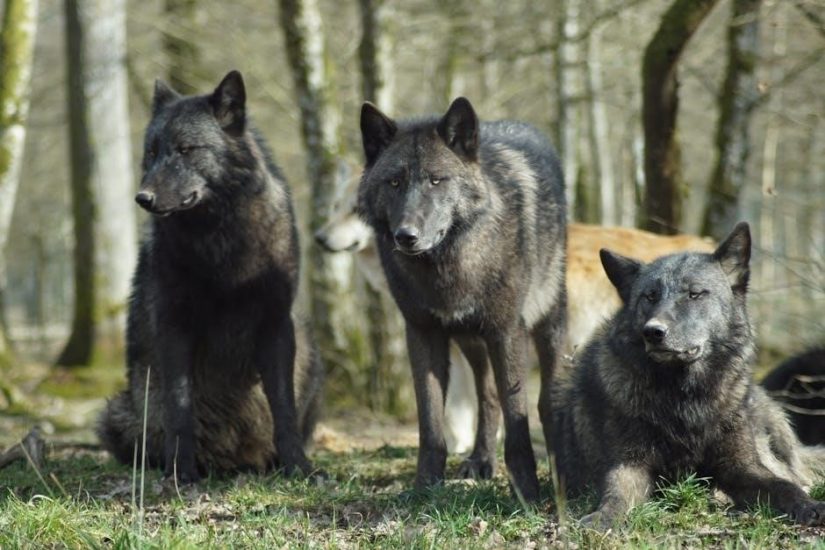Julie of the Wolves by Jean Craighead George is a captivating novel about a young Inuk girl‚ Miyax‚ who survives in the Alaskan wilderness with a wolf pack. The story explores themes of survival‚ identity‚ and cultural conflict‚ winning the 1973 Newbery Medal for its profound portrayal of human interaction with nature.
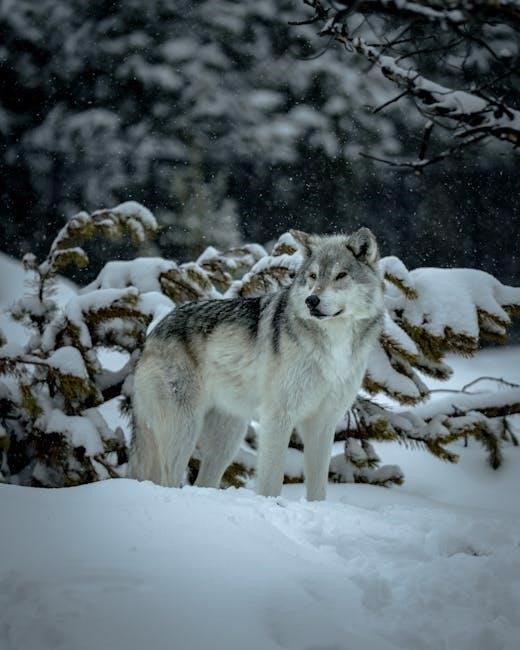
Background and Setting
Set in the 20th-century Alaskan wilderness‚ the novel explores the Inuit culture and the clash between tradition and modernization in the Arctic tundra‚ emphasizing survival and cultural identity.
2.1 Historical Context
Julie of the Wolves is set in 20th-century Alaska‚ a time of significant cultural and environmental change. The novel reflects the clash between Inuit traditions and modernization‚ as well as the impact of external forces like missionaries and traders. Miyax’s journey mirrors the broader historical context of Indigenous peoples navigating the encroachment of Western culture. The story highlights the resilience of Inuit traditions while acknowledging the challenges posed by a rapidly changing world. The Alaskan wilderness serves as both a setting and a character‚ embodying the harsh realities of survival and the deep connection to nature that defines the Inuit way of life. This historical backdrop underscores Miyax’s internal conflict between her ancestral heritage and the influences of modern society. The novel provides a poignant portrayal of a culture striving to preserve its identity amidst external pressures.
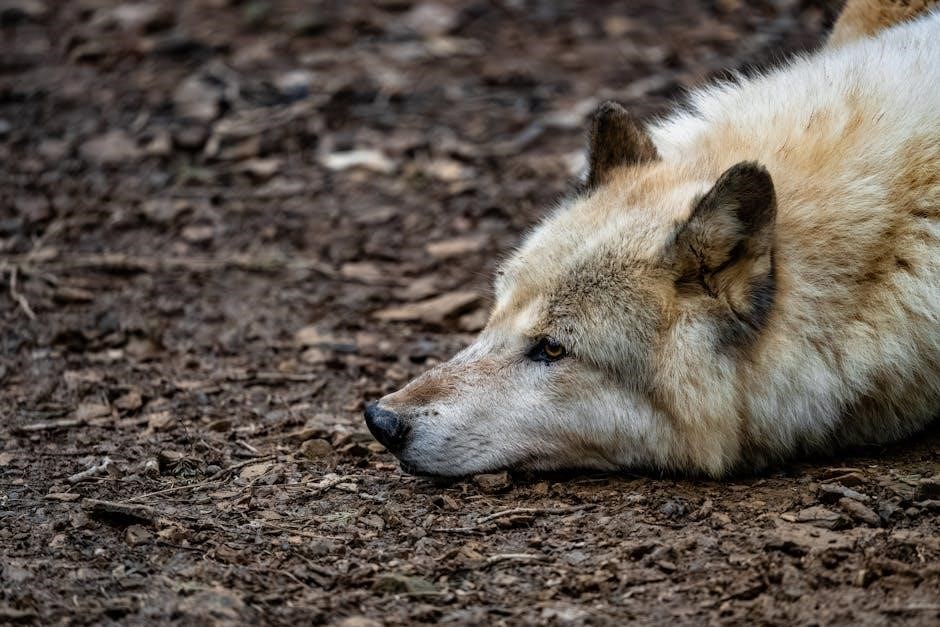
2.2 Cultural Setting
Julie of the Wolves is deeply rooted in the cultural traditions of the Inuit people‚ exploring the intricate relationship between humans and nature. The novel portrays the Inuit way of life‚ emphasizing their deep respect for the land and its creatures. Miyax’s interactions with the wolf pack symbolize the harmony and interdependence central to Inuit beliefs. The cultural setting is marked by the contrast between the traditional “Inuit” way of life and the encroaching “gussak” (white) culture‚ which Miyax struggles to reconcile. The story highlights the importance of community‚ survival skills‚ and the spiritual connection to the natural world. Through Miyax’s journey‚ the novel illustrates the richness of Inuit traditions while addressing the challenges of cultural assimilation. The Alaskan tundra serves as a backdrop for this exploration‚ showcasing the resilience and resourcefulness of the Inuit people in the face of a rapidly changing world.
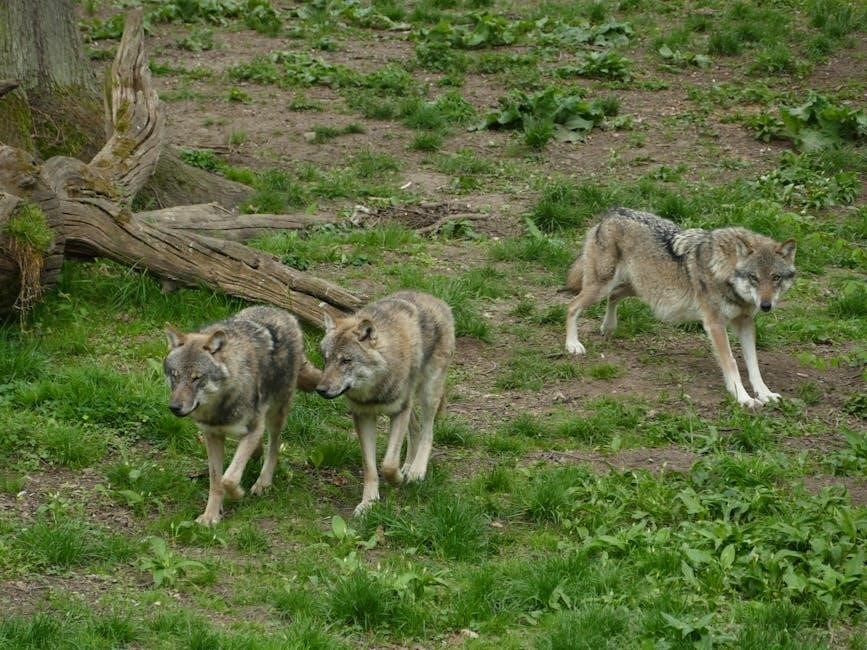
Plot Summary
Julie of the Wolves follows Miyax‚ a young Inuk girl‚ as she navigates survival in the Alaskan wilderness. After fleeing her abusive husband‚ she learns to thrive with a wolf pack‚ exploring themes of identity and resilience in a harsh environment.
3.1 Part 1: Amaroq‚ the Wolf
Part 1 introduces Amaroq‚ the leader of a wolf pack‚ and Miyax‚ a young Inuk girl who forms a bond with them. The narrative details Miyax’s initial encounters with the wolves‚ highlighting her resourcefulness and determination to survive in the harsh Arctic environment. Through her observations and interactions‚ Miyax learns to communicate with the wolves‚ establishing a deep connection that becomes crucial to her survival. This section sets the stage for her journey‚ blending her traditional knowledge with the challenges of the wild. The dynamic between Miyax and Amaroq showcases themes of trust‚ adaptation‚ and the interconnectedness of humans and nature.
3.2 Part 2: Miyax‚ the Girl
Part 2 shifts the focus to Miyax‚ a 13-year-old Inuk girl‚ who fled her abusive husband‚ Daniel‚ and now faces the unforgiving Alaskan wilderness alone. This section delves into her backstory‚ revealing her cultural identity and the emotional scars from her past. Miyax’s journey is marked by her determination to survive and reconnect with her Inuit heritage. She uses her knowledge of nature and traditional skills to navigate the tundra‚ showcasing her resilience and resourcefulness. The narrative explores her internal struggles‚ including her desire to balance modern life with her ancestral traditions. Miyax’s interactions with the wolves deepen‚ highlighting her ability to form connections in isolation. This part emphasizes her growth from a vulnerable girl to a strong‚ self-reliant individual‚ setting the stage for her ultimate choices and the lessons she learns about survival and identity.
3.3 Part 3: Kapugen‚ the Hunter
Part 3 introduces Kapugen‚ Miyax’s father‚ whose absence and influence shape her journey. A skilled hunter and traditional Inuk‚ Kapugen embodies the cultural values Miyax longs to reconnect with. His teachings about survival and respect for nature are central to Miyax’s ability to thrive in the wilderness. The narrative explores their complex relationship‚ highlighting his role as both a father and a symbol of her heritage. Kapugen’s legacy motivates Miyax to stay true to her roots‚ even as modernization encroaches. Through flashbacks‚ the story reveals his wisdom and the bond they shared‚ which fuels Miyax’s determination to survive and find her place in the world. Kapugen’s character underscores themes of tradition‚ identity‚ and the enduring connection between humans and nature‚ making him a pivotal figure in Miyax’s journey toward self-discovery and resilience.
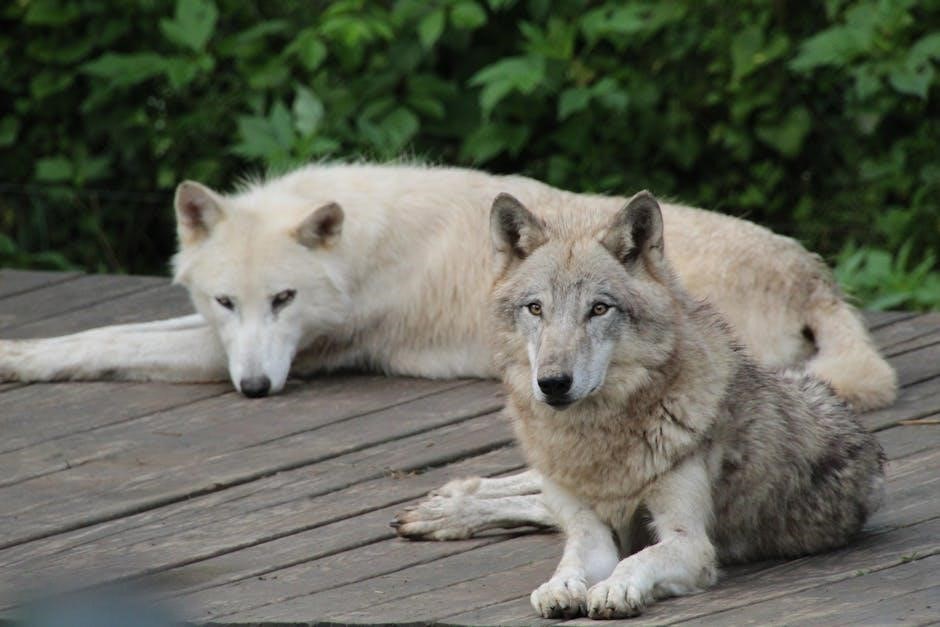
Characters
The novel centers around Miyax/Julie and the wolf pack‚ with four adults and five pups serving as her companions. These characters symbolize community‚ survival‚ and the bond between humans and nature‚ driving the story’s emotional depth.
4.1 Protagonist: Miyax/Julie
Miyax‚ also known as Julie‚ is the resilient protagonist of the novel. A 13-year-old Inuk girl‚ she flees her abusive husband and navigates the harsh Alaskan wilderness. Her dual identity reflects her struggle between traditional Inuit customs and modern American culture. Resourceful and determined‚ Miyax learns to survive by communicating with a wolf pack‚ showcasing her adaptability and courage. Her journey is a quest for self-discovery and belonging‚ as she grapples with the loss of her family and cultural heritage. Through her experiences‚ Miyax embodies themes of survival‚ identity‚ and the interconnectedness of humans and nature. Her character is both inspiring and poignant‚ illustrating the strength of the human spirit in the face of adversity. Her story has captivated readers‚ making her one of the most memorable characters in children’s literature‚ as highlighted in the Julie of the Wolves PDF version.
4;2 The Wolves
The wolves in Julie of the Wolves are central to Miyax’s survival and her emotional journey. The pack‚ consisting of four adult wolves and five pups‚ becomes her companions in the Alaskan wilderness. Each wolf has a distinct personality‚ from the leader Amaroq to the playful pups‚ adding depth to their portrayal. They are not just animals but symbols of wild beauty‚ resilience‚ and community. The novel highlights their intelligence and social structure‚ showing how they hunt‚ protect‚ and care for one another. Miyax learns to communicate with them‚ forming a bond that transcends species. The wolves represent the untamed power of nature and the strength of familial bonds. Their presence underscores the themes of survival and interconnectedness‚ making them as vital to the story as Miyax herself. The wolves in the Julie of the Wolves PDF version are a testament to the enduring connection between humans and the natural world.
4.3 Secondary Characters
The secondary characters in Julie of the Wolves play pivotal roles in shaping Miyax’s journey and understanding of her world. The bent woman‚ an elderly priestess‚ offers spiritual guidance during the Bladder Feast‚ embodying the wisdom of Inuit traditions. Miyax’s mother‚ though deceased‚ remains a significant influence‚ teaching her the ways of survival and cultural heritage through stories. Daniel‚ Miyax’s abusive husband‚ represents the oppressive forces she escapes‚ highlighting her struggle for independence. These characters‚ while not central to the plot‚ provide depth to the narrative‚ illustrating the societal and cultural pressures Miyax navigates. Their presence underscores themes of identity‚ tradition‚ and resilience‚ enriching the story’s emotional and cultural landscape. The Julie of the Wolves PDF version vividly portrays these characters‚ ensuring their importance is evident in the digital format.

Themes
Julie of the Wolves explores themes of survival‚ identity‚ cultural conflict‚ and human vs. nature. These themes highlight Miyax’s resilience‚ her struggle to balance tradition and modernity‚ and her deep connection with the natural world.
5.1 Survival
Survival is the cornerstone of Julie of the Wolves‚ as Miyax navigates the harsh Alaskan wilderness. Through her journey‚ she learns essential skills like hunting‚ shelter-building‚ and understanding animal behavior. Her ability to adapt and observe nature is crucial‚ as she faces challenges such as starvation‚ extreme cold‚ and predators. Miyax’s resourcefulness and determination highlight the importance of resilience in the face of adversity. The novel emphasizes how survival is not just physical but also mental‚ requiring courage and wit. By mastering these skills‚ Miyax not only survives but also finds a deeper connection with the natural world. Her story serves as a testament to the human spirit’s capacity to endure and thrive in unforgiving environments‚ making survival a central and inspiring theme of the book.
5.2 Identity
Identity is a central theme in Julie of the Wolves‚ as Miyax struggles to reconcile her Inuit heritage with the influences of modern civilization. Torn between two worlds‚ she grapples with her role as a traditional Inuk girl and the encroaching “gussak” (white) culture. Her journey in the wilderness becomes a metaphor for self-discovery‚ as she reconnects with her ancestral traditions and learns to value her cultural roots. Miyax’s dual identity‚ reflected in her names Julie and Miyax‚ symbolizes her internal conflict. Through her experiences with the wolf pack and the natural world‚ she finds a sense of belonging and purpose‚ ultimately embracing her Inuit identity. This theme highlights the challenges of cultural assimilation and the importance of preserving one’s heritage in a rapidly changing world. Miyax’s story serves as a powerful exploration of self-discovery and the enduring strength of cultural identity.
5.3 Cultural Conflict
Cultural conflict is a significant theme in Julie of the Wolves‚ as Miyax navigates the tension between her Inuit heritage and the encroaching influence of modern civilization. The novel portrays the clash between traditional ways of life and the pressures of contemporary society‚ particularly through Miyax’s experiences. Her marriage to Daniel‚ a man influenced by Western culture‚ symbolizes the broader conflict between Inuit traditions and the intrusion of “gussak” (white) customs. Miyax’s journey reflects her internal struggle to reconcile these opposing worlds‚ as she seeks to preserve her cultural identity while facing the realities of a rapidly changing world. The novel highlights the challenges of maintaining indigenous traditions in the face of modernization‚ offering a poignant commentary on the loss of cultural diversity and the resilience of those who fight to protect their heritage.
5.4 Human vs. Nature
Human vs. Nature is a central theme in Julie of the Wolves‚ as Miyax’s survival depends on her ability to harmonize with the harsh yet beautiful Alaskan wilderness. The novel portrays nature as both a nurturing and unforgiving force‚ emphasizing the delicate balance between humanity and the environment. Miyax’s deep respect for the land and its creatures‚ rooted in her Inuit heritage‚ allows her to thrive in the tundra. Her communication with the wolves‚ particularly Amaroq‚ highlights her ability to connect with nature on a profound level. However‚ the novel also explores the tension between human civilization and the natural world‚ as modernization threatens the traditional way of life. Miyax’s journey reflects the struggle to preserve this balance‚ illustrating the importance of coexisting with nature rather than dominating it. Through her experiences‚ the novel underscores the idea that humans are not separate from nature but an integral part of it.

Symbolism
Julie of the Wolves richly employs symbolism‚ with wolves representing loyalty and survival‚ and nature embodying both beauty and danger. Miyax’s journey symbolizes humanity’s connection to and struggle with the wild.
6.1 Wolves as Symbols
The wolves in Julie of the Wolves serve as powerful symbols of survival‚ loyalty‚ and the enduring connection between humans and nature. They represent the harsh yet beautiful reality of the Arctic wilderness‚ embodying both danger and protection. Through their interactions with Miyax‚ the wolves symbolize the idea of community and trust‚ showing how even in the harshest environments‚ bonds can form between species. The pack’s hierarchy and cooperation reflect human societal structures‚ while their adaptability mirrors Miyax’s own resilience. The wolves also symbolize freedom and the untamed spirit of the wild‚ contrasting with the constraints of human civilization. Their presence underscores the theme of survival‚ highlighting the importance of understanding and respecting nature. Ultimately‚ the wolves are a metaphor for the strength and resourcefulness needed to thrive in a challenging world.
6.2 Nature as a Symbol
Nature in Julie of the Wolves serves as a profound symbol of resilience‚ interconnectedness‚ and the cycle of life. The Arctic wilderness‚ with its harsh yet majestic beauty‚ represents both a challenge and a source of survival for Miyax. The land itself is a character‚ shaping her identity and teaching her essential lessons about adaptability and respect for the environment. The changing seasons symbolize the passage of time and the rhythms of life‚ while the animals—like the caribou and birds—embody the interconnectedness of all living beings. Nature also symbolizes freedom and the untamed spirit‚ contrasting with the constraints of human society. Through her journey‚ Miyax learns to read nature’s signs‚ underscoring the importance of understanding and harmonizing with the natural world. Ultimately‚ nature is a mirror for Miyax’s inner growth‚ reflecting her strength‚ resourcefulness‚ and deep connection to her heritage.
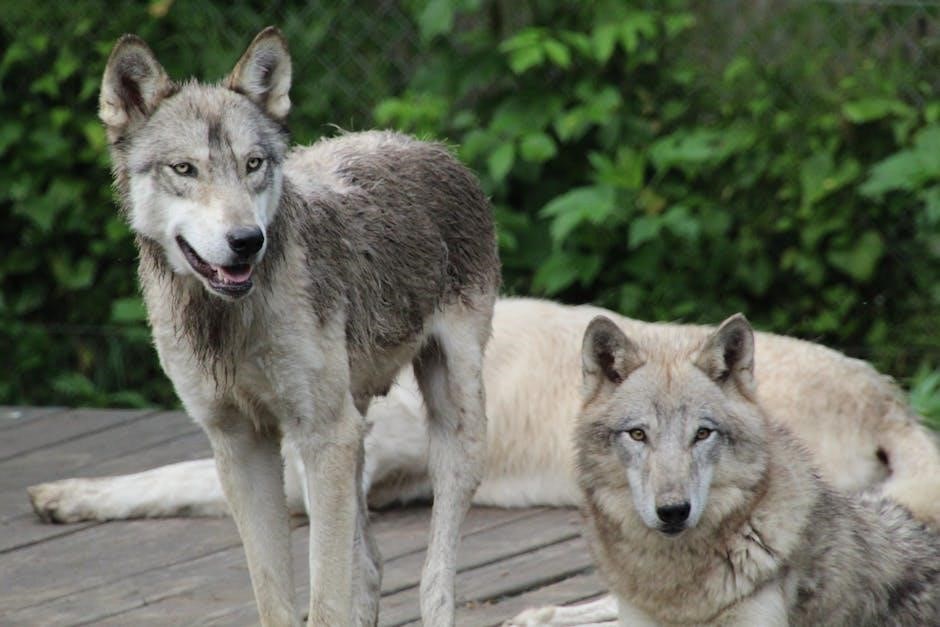
Survival Elements
Julie of the Wolves highlights essential survival skills like finding food‚ building shelter‚ and navigating harsh environments. Miyax’s journey showcases adaptability‚ resourcefulness‚ and deep understanding of nature to endure the Arctic wilderness.
7.1 Survival Skills
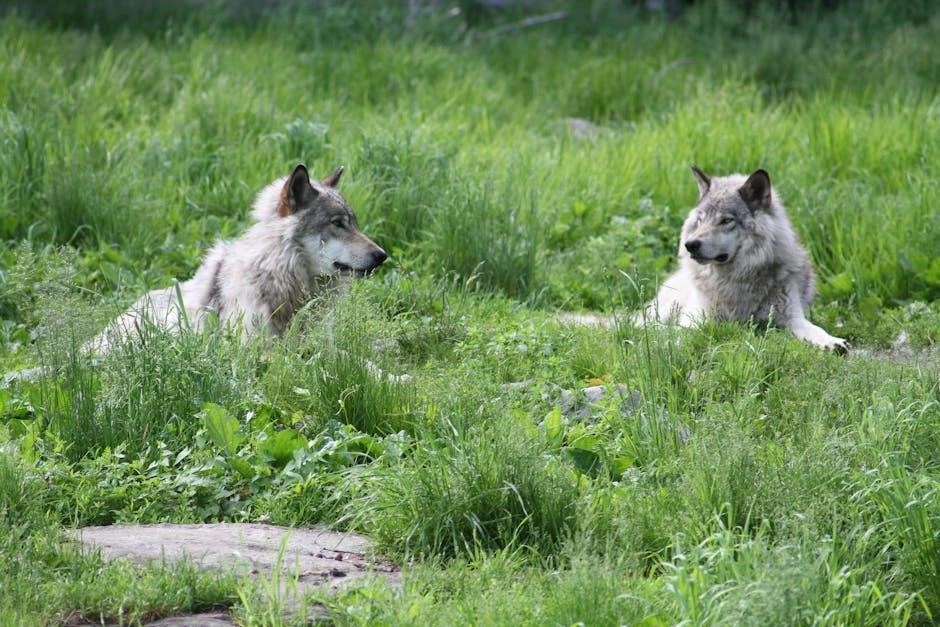
In Julie of the Wolves‚ Miyax’s survival skills are rooted in her Inuit upbringing and resourcefulness. She learns to hunt‚ track‚ and navigate the Arctic terrain effectively. Her ability to build shelters using natural materials like snow and animal hides is crucial in enduring the harsh climate. Miyax also demonstrates expertise in finding food sources‚ such as berries‚ fish‚ and small game‚ which sustain her during her journey. Additionally‚ her understanding of animal behavior allows her to communicate with the wolf pack‚ fostering a symbiotic relationship that aids her survival. These skills are not only practical but also reflect her deep connection to nature and her cultural heritage. Through her experiences‚ the novel emphasizes the importance of adaptability‚ patience‚ and respect for the environment in overcoming adversity.
7.2 Survival Challenges
Miyax faces numerous survival challenges in the harsh Arctic wilderness‚ where the unforgiving environment tests her resilience. Starvation‚ extreme cold‚ and isolation are constant threats‚ forcing her to rely on her wits and resourcefulness. The scarcity of food and water pushes her to innovate‚ often relying on berries‚ fish‚ and small game to sustain herself. Additionally‚ she must navigate dangerous terrain‚ avoiding predators like bears and wolves‚ which pose a dual threat as both adversaries and potential allies. Her journey is also marked by internal struggles‚ such as fear‚ loneliness‚ and the psychological toll of her traumatic past. These challenges highlight her determination and adaptability‚ as she learns to coexist with nature and the wolf pack. Through these struggles‚ the novel underscores the fragility of human life in the wild and the importance of resilience in the face of adversity.

The PDF Version
The PDF version of Julie of the Wolves offers a convenient and accessible way to read the classic novel. Its digital format ensures portability and easy access‚ making it ideal for modern readers. With over three million copies sold‚ the e-book continues to be a popular choice for fans of survival and adventure stories.
8.1 Availability
The PDF version of Julie of the Wolves is widely available for download through various online platforms‚ including Amazon‚ Barnes & Noble‚ and Google Books. Readers can easily purchase and access the e-book‚ ensuring convenience for fans of the novel. The digital format has made the story more accessible to a global audience‚ allowing readers to enjoy the timeless tale of survival and cultural identity; Additionally‚ the PDF version is often included in e-book bundles or collections‚ making it easier for readers to discover and download. With its enduring popularity‚ the novel remains a staple in many digital libraries‚ ensuring its availability for future generations. The e-book’s widespread distribution has contributed to its continued success‚ solidifying its place as a classic in children’s literature.
8.2 Benefits of the E-book Format
The e-book format of Julie of the Wolves offers numerous advantages for readers. It provides instant access to the novel‚ allowing readers to download and start reading immediately. The digital version is lightweight and portable‚ making it easy to carry multiple copies or switch devices seamlessly. Features like adjustable font sizes and night reading modes enhance readability‚ catering to different preferences. The e-book also includes interactive elements such as bookmarks‚ highlights‚ and search functions‚ which improve the reading experience. Furthermore‚ the PDF format ensures that the original layout and illustrations are preserved‚ maintaining the book’s visual appeal. Environmental benefits are another plus‚ as e-books reduce the need for paper. Overall‚ the e-book format makes Julie of the Wolves more accessible‚ convenient‚ and engaging for modern readers while retaining the story’s timeless charm. This format has undoubtedly contributed to the novel’s enduring popularity.
